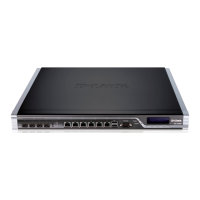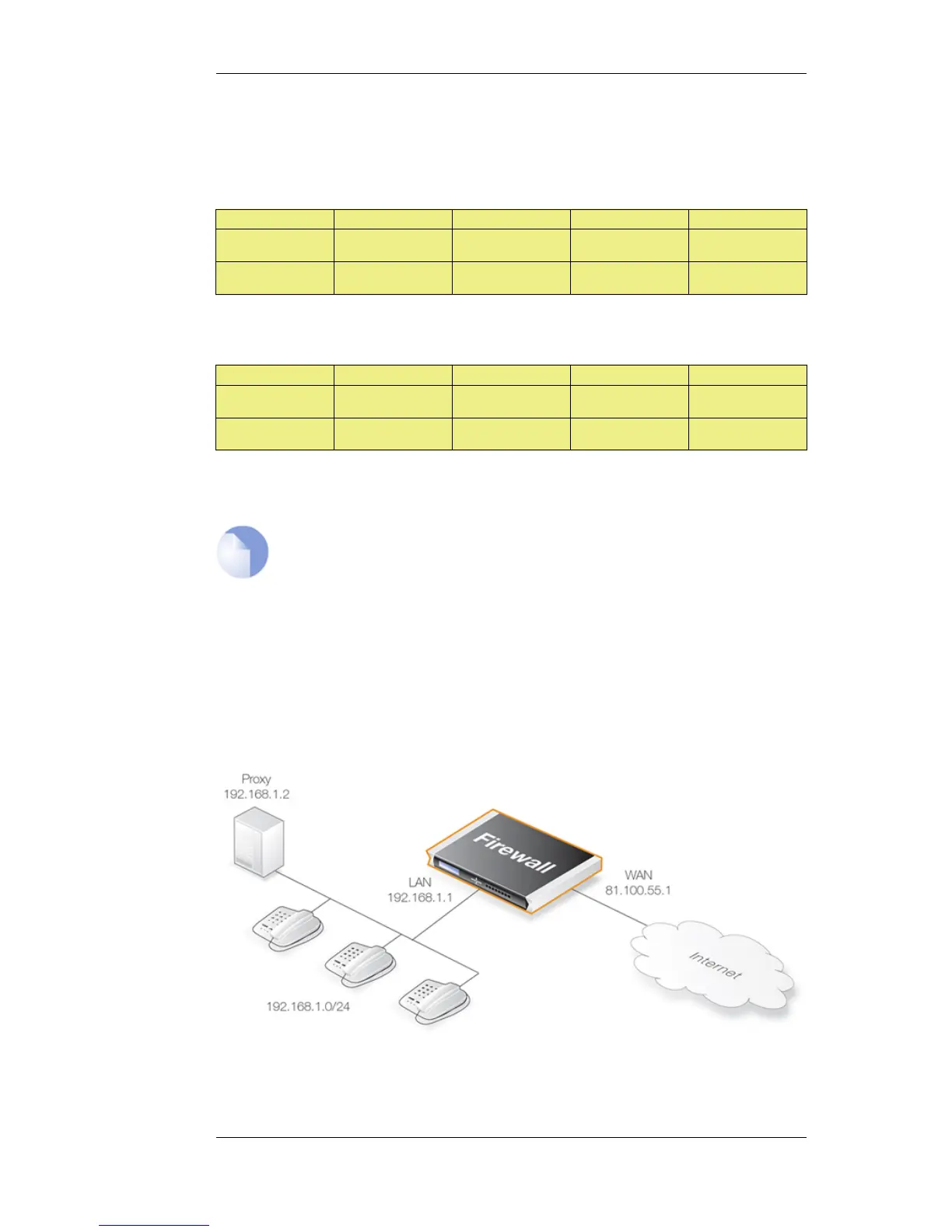traversal issues with NAT in a SIP setup.
The IP rules with the Record-Route option enabled would be as shown below, the changes that
apply when NAT is used are shown in parentheses "(..)".
Action Src Interface Src Network Dest Interface Dest Network
Allow
(or NAT)
lan lannet wan ip_proxy
Allow wan ip_proxy lan
(or core)
lannet
(or wan_ip)
Without the Record-Route option enabled the IP rules would be as shown below, the changes that
apply when NAT is used are again shown in parentheses "(..)".
Action Src Interface Src Network Dest Interface Dest Network
Allow
(or NAT)
lan lannet wan <All possible IPs>
Allow wan <All possible IPs> lan
(or core)
lannet
(or ipwan)
The advantage of using Record-Route is clear since now the destination network for outgoing traffic
and the source network for incoming traffic have to include all IP addresses that are possible.
The Service object for IP rules
In this section, tables which list IP rules like those above, will omit the Service object
associated with the rule. The same, custom Service object is used for all SIP scenarios.
Scenario 2
Protecting proxy and local clients - Proxy on the same network as clients
In this scenario the goal is to protect the local clients as well as the SIP proxy. The proxy is located
on the same, local network as the clients, with SIP signalling and media data flowing across two
interfaces. This scenario is illustrated below.
This scenario can be implemented in two ways:
• Using NAT to hide the network topology.
6.2.8. The SIP ALG Chapter 6. Security Mechanisms
303

